mindfulness program for secondary students
Jul 10, 2022

Developed by leading mindfulness teachers,.b (pronounced 'dot-be') is a classroom introduction to mindfulness for secondary students.
At the most basic level, .b aims simply to be an awareness-raising exercise that gives all students a taste of mindfulness, so that they know about it, and can thus return to it later in life, learning more about it when this is useful to them.
The most fundamental aims are:
- For all students to know about mindfulness
- For most to enjoy it
- For many to use it now and again
- For as many as possible to remember it.
- And some to practise daily
The primary objective is for students to have a positive experience of mindfulness. For some students, this might be a life-changing experience, but not for most, so at a superficial level, it is about them enjoying it. Having said this, if you can make mindfulness relevant to their lives now, they will often engage with it and use it almost immediately.
For some students, mindfulness can help them to achieve their goals, such as focusing in class, improving performance in sports, or getting on with others. For others, mindfulness can become a lifeline to help them deal with present difficulties, such as coping with exam pressure and other causes of anxiety and distress.
Here are the learning intentions for each lesson:
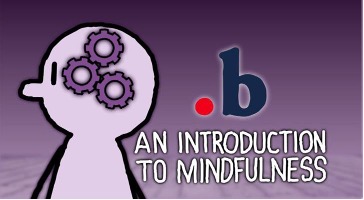
Introduction to Mindfulness
Learning Intention:
To introduce mindfulness in a way that is engaging, entertaining and persuasive.
For students to have their first taste of mindfulness practice, specifically to:
1. ‘Play attention’ via mindfulness of hands
2. Do a ‘.b’ (the signature practice for this program)
This is a lesson to help persuade the class why it is a good idea to learn mindfulness.
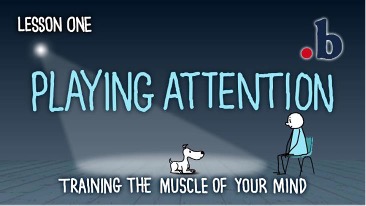
Lesson 1: 'Playing Attention'.
Learning Intention:
To introduce students to the faculty of their attention.
To experience that they can direct their attention.
To understand the untrained mind’s fickle nature –it is like a puppy.
To begin to provide some simple tools for training attention.
To introduce key attitudes to attention-training, such as kindness, patience, and repetition.
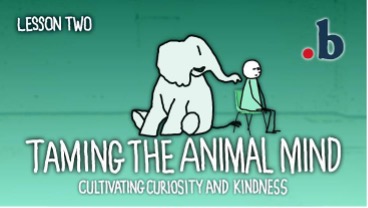
Lesson 2: Taming The Animal Mind.
Learning Intention:
To explore that the mind has a life of its own – we often can’t control it.
To nurture an attitude of curiosity, kindness, acceptance, and openness that helps us to deal more skilfully with these fluctuating mind-states.
To teach that by ‘anchoring’ our attention in the lower half of the body we can begin to turn towards calm even when our minds are stormy.
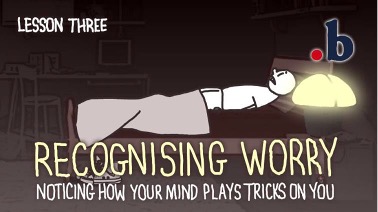
Lesson 3: Recognising Worry.
Learning Intention:
To understand how the mind habitually interprets and ‘tells stories’ about what is happening.
To recognise how we can get 'stuck in our heads' and ‘ruminate’ or ‘catastrophise’.
To learn about how rumination is not only ‘stressful’ – it affects our bodies and behaviour, from sleep and sport to spots and studies.
To explore how practices like the ‘7-11’ and the ‘Beditation’ can help us deal with this by switching
us from ‘thinking’ mode to ‘sensing’ mode.
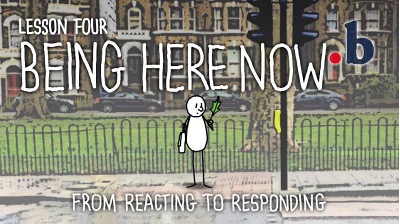
Lesson 4: Being Here Now.
Learning Intention:
To explain how ‘autopilot’ prevents us from being alive and awake to our experience in
the here and now.
To learn to appreciate and savour the pleasant.
To learn how to respond rather than react to the unpleasant.
To learn how a .b can quickly bring our attention into the here and now, and help us to respond rather than react to what is difficult.
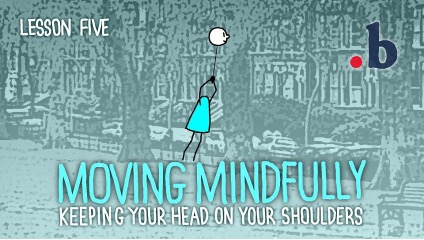
Lesson 5: Moving Mindfully.
Learning Intention:
To learn that Mindfulness is also about movement.
We spend a great deal of time doing actions ‘mindlessly’… on autopilot.
One such activity is walking. We are rarely ‘present’ when we walk, or move in general.
Learning to move mindfully can also be used as a resource for peak performance in sport, music, and the performing arts.
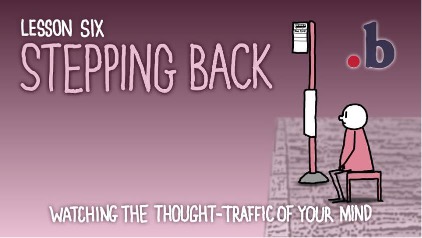
Lesson 6: Stepping Back.
Learning Intention:
To understand we have the capacity to ‘step back’ from our thoughts.
Learn that it can be helpful to see thoughts as ‘traffic’ flowing through the mind.
Identify some of the particular ‘thought trains’ that pass through the mind.
Recognise we don’t have to ‘get on the thought train’ when difficult thoughts arise.
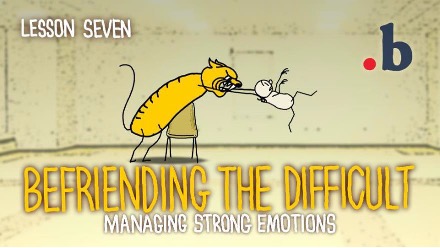
Lesson 7: Befriending The Difficult.
Learning Intention:
To understand stress: where it comes from, why it is necessary, how it works and the potentially harmful effects.
To identify and draw our “stress signature” - where in the body do we feel stress?
To learn to respond rather than react, by ‘turning towards’ and ‘being with’ difficult emotions.
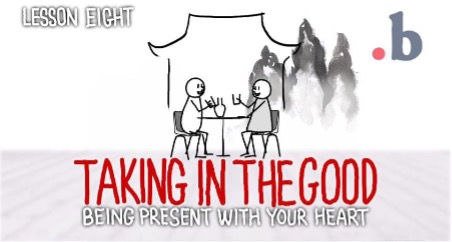
Lesson 8: Taking in The Good.
Learning intention:
To encourage an appreciation of what is good in life.
To explain how even the ordinary can be experienced as ‘good’ if we are more fully
aware of it.
To teach the advice of those who have done this even in awful circumstances.
To teach a practice of “taking in the good” so that what 'good' turns from an idea into
an experience.
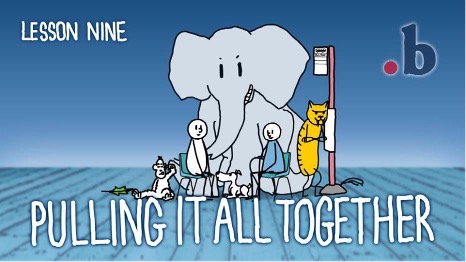
Lesson 9: Pulling It All Together.
Learning Intention:
To identify what students have found most useful in the .b course.
To consider in what areas of their life they might apply their new mindfulness skills.
To give feedback on the course.
